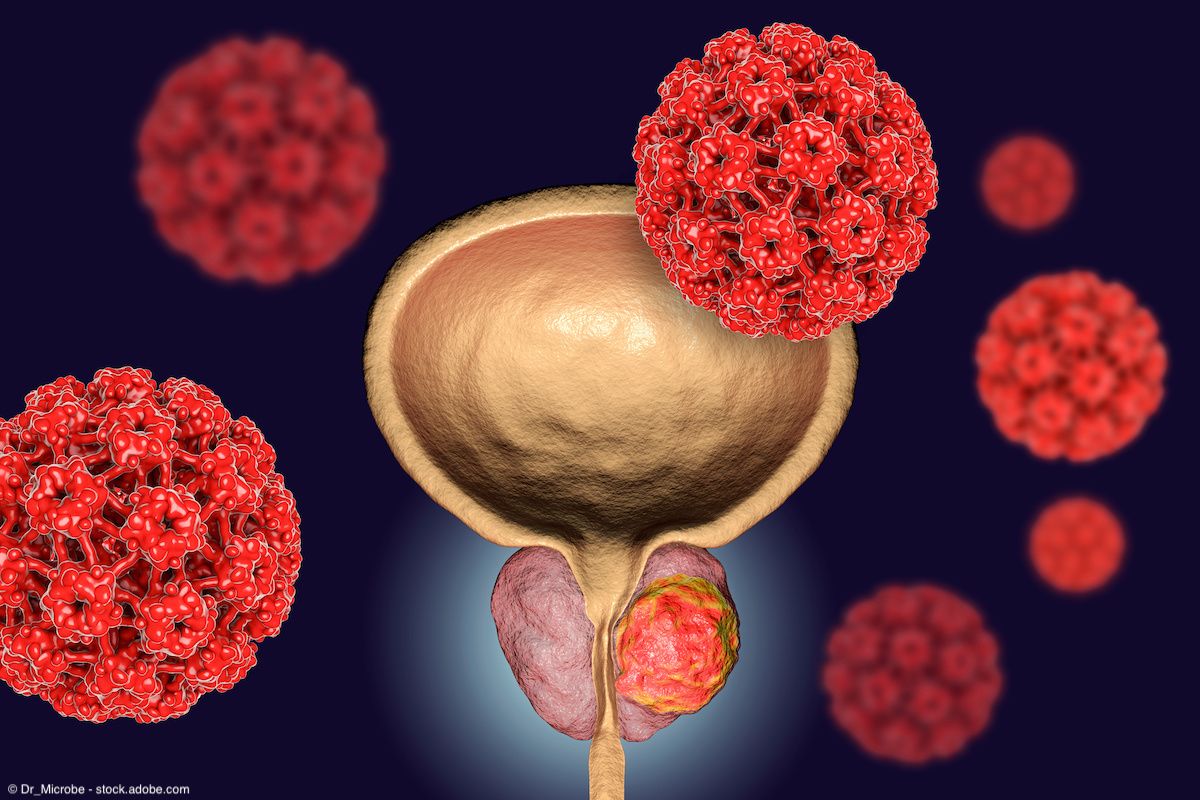Long-term study compares adverse events from prostate cancer treatments
Data showed that treatment with radical prostatectomy was associated with worse urinary incontinence but not worse sexual function compared with other treatment options, regardless of cancer risk.
Recently published 10-year follow-up data from the CEASAR trial (NCT01326286) outline patient-reported adverse events associated with different treatment options for localized prostate cancer.1
"“The findings underscore the importance of counseling men with unfavorable prognosis prostate cancer differently than favorable prognosis cancer regarding expected long-term functional outcomes," says Daniel A. Barocas, MD, MPH, FACS.

“Many men with localized prostate cancer survive for 15 years or more, with minimal differences in survival among various treatment strategies. Given this long-time horizon, and similar survival rates, the choice of treatment for patients may be influenced by the adverse effects of the treatments,” explained lead author Bashir Al Hussein Al Awamlh, MD, in a news release on the findings.2 Al Hussein Al Awamlh is a urologic oncology fellow at Vanderbilt University School of Medicine in Nashville, Tennessee.
Overall, the data showed that treatment with radical prostatectomy was associated with worse urinary incontinence but not worse sexual function compared with other treatment options, regardless of cancer risk. In total, 14% to 25% of men who underwent radical prostatectomy reported bothersome leakage at 10 years following treatment, compared with 4% to 11% of patients who underwent external beam radiation therapy (EBRT).
Within the first 3 to 5 years, patients with favorable prognosis who underwent prostatectomy experienced worse sexual impairment compared with other treatment options. After 5 years, sexual function scores were similar across all treatment options, which the authors note may be due to age-related decline, gradual decline associated with radiation, and conversion from active surveillance to treatment.
Further, among patients with an unfavorable prognosis, EBRT plus androgen deprivation therapy (ADT) was associated with worse bowel and hormone function compared with radical prostatectomy. However, there were no significant difference in sexual function impairment between men who underwent radical prostatectomy and men who underwent EBRT plus ADT.
“The findings underscore the importance of counseling men with unfavorable prognosis prostate cancer differently than favorable prognosis cancer regarding expected long-term functional outcomes and suggest that adverse effects of treatments on sexual function may be deemphasized in decision making for some men. They also highlight the benefits of active surveillance, when oncologically safe for patients with favorable-prognosis prostate cancer, by avoiding adverse effects associated with other treatment options,” said senior author Daniel A. Barocas, MD, MPH, FACS, in the news release.2 Barocas is a professor and executive vice chair of urology at Vanderbilt University Medical Center.
In total, the 10-year follow-up analysis included 2445 patients, of which 1797 were non-Hispanic White men, 350 were non-Hispanic Black men, 184 were Hispanic men, 77 were Asian men, and 33 were other races. All participants included in the multi-site CEASAR study were treated for localized prostate cancer between 2011 and 2012.3
Throughout the 10-year follow-up, participants’ sexual, urinary, bowel, and hormone function were measured using the Expanded Prostate Cancer Index Composite questionnaire (range, 0-100; 100 = best).
Patients were stratified by favorable prognosis (n = 1877) or unfavorable prognosis (n = 568). Those included in the favorable prognosis group were either placed on active surveillance (n = 379) or received nerve-sparing prostatectomy (n = 1043), EBRT (n = 359), or low-dose-rate brachytherapy (n = 96). Those included in the unfavorable prognosis group received either prostatectomy (n = 362) or EBRT plus ADT (n = 206).
According to the news release, the authors plan to develop a personalized, patient-facing prediction tool based on data from the study to offer functional estimates through 10 years for different treatment options.2 The goal of the tool would be to aid in decision-making regarding treatment for prostate cancer.
References
1. Al Hussein Al Awamlh B, Wallis CJD, Penson DF, et al. Functional outcomes after localized prostate cancer treatment. JAMA. 2024;331(4):302-317. doi:10.1001/jama.2023.26491
2. Long-term follow up pinpoints side effects of treatments for prostate cancer patients. News release. Vanderbilt University Medical Center. January 22, 2024. Accessed January 23, 2024. https://www.newswise.com/articles/long-term-follow-up-pinpoints-side-effects-of-treatments-for-prostate-cancer-patients
3. CEASAR Prostate Study. Vanderbilt University Medical Center. Accessed January 23, 2024. https://www.vumc.org/prostate-study/about-ceasar
Phase 1B trial to evaluate relugolix and enzalutamide in high-risk prostate cancer
July 24th 2024"Going forward after this study, we hope to be able to expand and potentially look at patients undergoing either surgery or radiation therapy, and really try to determine the potential benefit," says Kelly L. Stratton, MD, FACS.
Bundled payment program covers kidney stone care
July 22nd 2024"One day, we're going to have to move away from fee for service, so we'd be wise to try to navigate those waters ahead of time, so we're not left dealing with the aftermath when someone else has implemented it for us," says Ruchika Talwar, MD.